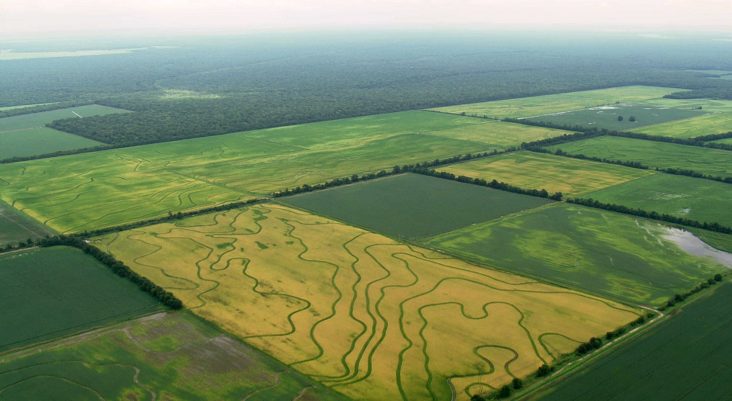Farm incomes on the rise; Fryar Center predicts trend to continue in 2022
by January 10, 2022 11:28 am 1,039 views

Farm income and agricultural land values were on the rise in 2021 and are projected to continue upwards in 2022, according to the Fryar Risk Management Center of Excellence. The Center expects this growth despite supply chain problems and other factors related to the ongoing COVID-19 pandemic.
The Fryar Center, established in 2020, analyzes all aspects of risk and its effects in agriculture. The center is part of the Dale Bumpers College of Agricultural, Food and Life Sciences and the University of Arkansas System Division of Agriculture.
The 19-page report has four sections, a review of markets and farm income estimates; livestock, meat and poultry markets; U.S. and global rice markets; and a section on the impact of satellite imagery on disaster assessment in agriculture.
“The unprecedented challenges for the global economy, and for the agriculture sector, initiated by the COVID-19 pandemic in 2020 have continued through 2021,” said John Anderson, head of the department of agricultural economics and agribusiness.
Agriculture is Arkansas’ top economic sector. Ag is a more than $20 billion industry in the Natural State. There are an estimated 44,000 farms that cover around 14 million acres dedicated to agriculture.
“The end of the year presents a good opportunity to evaluate how we have been affected by those challenges, how we have managed them overall, and — looking ahead — how we are positioned for whatever comes next,” he said. “Our mission at the Fryar Center is to help farms and other businesses improve their decision making in the face of market risks. One of best things we can do to achieve that mission is to provide decision makers with timely, objective information on market conditions.”
Anderson said the summary is meant to “take stock of where we are and also identify key factors likely to affect profitability and risk as we move into the new year.”
As the world moved past 2020, there has been a persistent rise in prices for goods and services, including commodities. For example, rice rose from $13.60 per hundredweight in 2019, to $14 even in 2020, then $14.80 in 2021. Soybeans went from $8.57per bushel in 2019, to $10.80 the following year, then $12.10 in 2021. Feeder steer prices rose from $143.69, dropped to $136.48 last year and rose to $145.65 in 2021
“Some of the increase in prices in 2021 represent a recovery following the unprecedented disruptions of 2020,” said Anderson. “For the most part, prices have increased well beyond pre-pandemic levels.”
These increases are also reflected in the Consumer Price Index compiled by the federal Department of Labor. The index rose 5.4% from September 2020 and just below 7% higher when compared to 2019.
The net effect of rising prices so far has been to raise farm income.
The Economic Research Service’s December farm income forecast estimated real net farm income (NFI) for 2021 at $116.8 billion — a better than 18% increase compared to 2020, whose NFI was also about 18% higher than in 2019.
“If realized, this will be the highest real net farm income since 2013, a year in which the effects of a major drought in 2012 resulted in record commodity prices,” Anderson said. adding that net farm income increased despite a sharp year-over-year drop in government support.
“Likewise, land values — stagnant at best since around 2014 in most major agricultural regions — appear to have come to life again, supported by a couple of years of good returns in the sector and historically low interest rates,” he said.
Even though the livestock and poultry industries spent 2021 recovering from the issues COVID presented in 2020, “there are lingering challenges that will carry over into 2022,” said James Mitchell, extension economist for the University of Arkansas System Division of Agriculture.
Many of the pandemic-related supply chain issues at processing plants eased in 2021 and Mitchell said the U.S. Department of Agriculture expected 2021 to finish nearly even with 2020 production.
Consumers are seeing red meat and poultry prices on the rise, with Mitchell noting red meat averaging 6.3% higher year-over-year and poultry at 4.2% higher year-over-year.
Through the first three-quarters of 2021, beef, pork and poultry have averaged 7.6%, 7.1% and 9.4% higher year-over-year, respectively.
“There are questions about whether the demand strength observed this year is sustainable,” Mitchell said. “However, the rate of food price inflation is historically high this year and could pressure consumer spending in 2022. Labor and logistical challenges continue to pressure meat and poultry supply chains. Higher input costs will influence on-farm decisions, which have dynamic effects that will show up in 2022-2023 meat and poultry production.”
